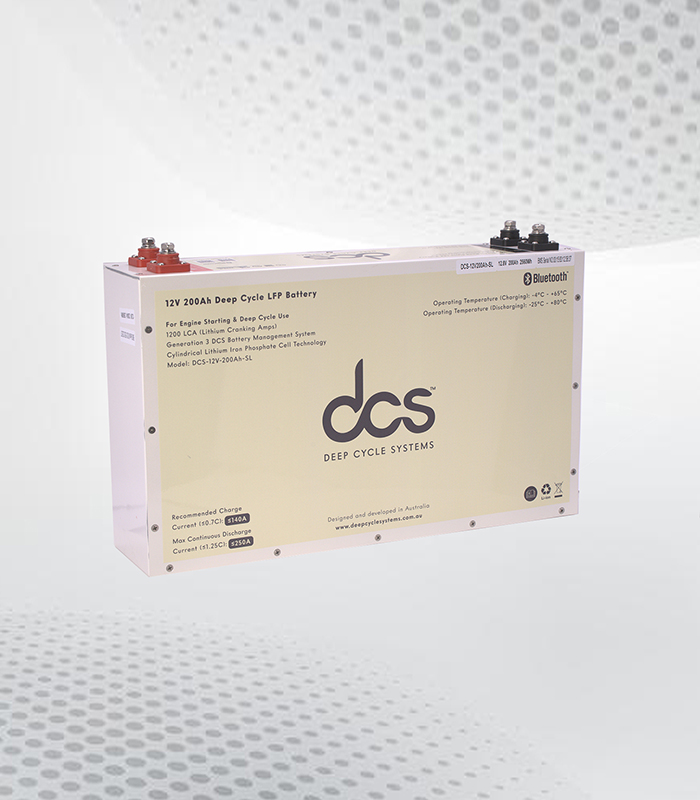Are you tired of dealing with heavy, traditional lead-acid batteries that seem to weigh you literally and figuratively? If so, it’s time to explore the world of lithium cranking battery. These power-packed dynamos are revolutionizing how we start engines and power equipment. With a lighter weight, longer lifespan, and improved efficiency, lithium-cranking batteries offer a modern solution for anyone looking to boost performance without compromising reliability.
Imagine never worrying about your battery failing after a few years or struggling with cumbersome installations again. Whether you’re an automotive industry enthusiast or someone who values dependable energy sources for everyday tools, understanding lithium-cranking batteries can transform your experience. Let’s explore their benefits and discover how you can make the most of this innovative technology!
Benefits of Using a Lithium-Cranking Battery
Lithium-cranking batteries have transformed the landscape of power solutions. Their lightweight design makes them easier to handle and install than traditional lead-acid batteries.
One significant benefit is their impressive cranking power. They can deliver high bursts of energy, making starting engines effortless even in extreme conditions.
Another advantage is durability. These batteries are less prone to sulfation and can withstand deep discharges without losing performance.
Moreover, lithium technology offers a longer lifespan than conventional options. Users often find themselves replacing their old batteries far less frequently.
Lithium-cranking batteries charge quickly, reducing downtime during crucial moments when every second counts. Their efficiency means less fuel consumption for vehicles that rely on frequent starts.
They contribute positively to environmental sustainability by being recyclable and free from toxic materials commonly found in other battery types.
How To Choose The Right Lithium Starting Battery For Your Needs?
Choosing the right Lithium starting battery starts with understanding your power requirements. Assess the voltage and amperage needed for your specific application, whether it’s for a boat, motorcycle, or RV. Next, consider the size and weight of the battery. Lithium batteries are typically lighter than traditional lead-acid options, which can be crucial if you’re trying to reduce overall vehicle weight.
Check the cold cranking amps (CCA) rating as well. A higher CCA means better performance in low temperatures—a vital factor for winter use. Look into warranty terms and manufacturer reputation. A reliable brand often indicates quality and longevity. Make sure to read reviews from other users; their experiences can guide you toward making an informed decision tailored to your needs.
Proper Maintenance and Care for Your Battery
Regular maintenance is key to ensuring your lithium-cranking battery performs at its best. Start by checking the terminals for corrosion or dirt. Clean them with baking soda and water to maintain good conductivity. Keeping your battery charged is essential. Avoid letting it discharge completely, as this can shorten its lifespan. Use an appropriate charger designed specifically for lithium batteries to prevent damage from overcharging.
Temperature plays a significant role in battery health. Store the battery in a calm environment when not in use, and avoid exposing it to extreme heat or cold. Periodically inspect connections and cables for wear or fraying. This simple practice can help you spot potential issues before they become significant problems, ensuring reliable performance whenever needed.
Tips for Maximizing Efficiency and Lifespan of Your Battery
Start with regular charging to get the most out of your lithium-cranking battery. Avoid letting it discharge completely. A partial charge is often better for longevity.
Temperature control plays a huge role, too. Keep your battery in a moderate environment, away from extreme heat or cold. Both can hinder performance and lifespan.
Consider investing in a smart charger designed specifically for lithium batteries. This ensures optimal charging cycles without overloading the system.
Routine checks are essential as well. Monitor connections for corrosion or wear and tear to maintain efficiency.
Practice good usage habits by minimizing electrical draw when the engine isn’t running. Simple adjustments can lead to significant improvements in both efficiency and durability over time.
Common Mistakes to Avoid When Using a Lithium-Cranking Battery
One common mistake users make is neglecting to read the manufacturer’s specifications. Each lithium-cranking battery has unique requirements for optimal performance, which can lead to diminished efficiency.
Another frequent oversight is improper charging practices. Using a charger not designed for lithium batteries can cause damage and reduce lifespan significantly.
Many people also forget about temperature considerations. Extreme heat or cold impacts battery performance, so it is vital to store batteries in suitable environments.
Additionally, some users assume that all batteries are interchangeable without considering capacity ratings and compatibility with their equipment. This can lead to unexpected failures during use.
Underestimating the importance of regular maintenance often results in avoidable issues. Simple checks on connections and terminals can ensure reliability.
Why You Should Consider Switching to a Lithium-Cranking Battery?
Switching to a lithium-cranking battery can revolutionize your power needs. These batteries pack a punch in terms of performance, offering higher cranking amps than traditional lead-acid options. Their lightweight design makes them perfect for those who need mobility without sacrificing power. Less weight means better fuel efficiency for vehicles and easier transport for portable applications.
Lithium batteries also provide faster recharge times. This means less downtime when you need reliable energy on demand. Another significant advantage is their longer lifespan. You won’t have to replace them as frequently, saving you money over time. Furthermore, they are more resistant to extreme temperatures, ensuring consistent performance regardless of weather conditions. Making the switch could unlock new levels of reliability and efficiency for both personal and professional use.
Maintenance & Considerations
Maintaining a lithium-cranking battery requires attention to detail. Regular monitoring of voltage levels is essential for optimal performance. Keeping the terminals clean and free from corrosion can significantly enhance connectivity. Temperature plays a crucial role in battery health. Storing your battery in moderate conditions helps maintain its lifespan and efficiency. Extreme heat or cold can lead to premature wear, so consider the climate when planning storage.
Using the correct charger explicitly designed for lithium batteries ensures proper charging cycles and prevents damage. Avoid overcharging, as this can lead to reduced capacity over time. Familiarize yourself with the manufacturer’s guidelines on maintenance schedules. Following these recommendations will help you get the most out of your investment while ensuring safety during use.
Installation Tips
Ensure a secure and proper fit when installing a lithium-cranking battery.
- Start by selecting the right location within your vehicle or equipment. It should be well-ventilated and free from moisture to prevent damage.
- Before installation, inspect the terminals for corrosion. Clean them if necessary, as good contact is essential for optimal performance.
- Next, connect the positive terminal first, followed by the negative one. This order helps avoid short circuits during installation.
- Ensure all connections are tight but not overly tightened to prevent stripping threads or damaging components. Using heat-shrink tubing can add an extra layer of protection against environmental factors.
Double-check that everything is securely in place before powering up your system. A clean and organized setup will significantly improve operational efficiency and safety over time.
Features of Lithium cranking batteries
Lithium-cranking batteries come packed with features that set them apart from traditional options.
One standout feature is their lightweight design. This makes installation and handling a breeze, especially for those who frequently move or replace batteries.
Another key aspect is rapid charging. Lithium batteries can recharge much faster than their lead-acid counterparts, allowing you to get back on the road quickly after downtime.
Longevity also plays a significant role in their appeal. These batteries boast impressive cycle lives, often exceeding 2,000 charge cycles under proper conditions, which means fewer replacements.
Additionally, lithium-cranking batteries exhibit superior temperature tolerance. They perform well in extreme heat or cold without compromising efficiency.
Built-in Battery Management Systems (BMS) ensure safe operation by preventing issues such as overcharging and short-circuiting while optimizing performance throughout the battery’s lifespan.
Applications of lithium starter battery
Lithium- batteries are versatile power sources that have various applications across various sectors.
- One significant use is in automotive applications. These lightweight batteries provide fast cranking power and are ideal for high-performance vehicles and everyday cars.
- Marine industries also benefit significantly from lithium starter battery. Sailboats and motorboats with these batteries experience reduced weight, enhancing fuel efficiency while ensuring reliable starting capabilities.
- In recreational vehicles (RVs), lithium batteries support not only engine starts but also auxiliary systems like lights and appliances, offering extended run times without compromising space or weight.
- Another noteworthy application is off-grid solar setups. These setups store energy efficiently and provide robust performance during peak demands.
Each sector showcases how lithium- batteries elevate functionality and reliability across diverse platforms.
Industries that benefit from this type of battery
Lithium-cranking batteries are transforming various industries with their efficiency and reliability.
The automotive sector is one of the primary beneficiaries. These batteries provide quick, reliable starts in electric vehicles and traditional combustion engines.
Marine applications also see significant advantages. Lithium-cranking batteries can withstand harsh marine environments while delivering high power on demand for starting engines.
In the recreational vehicle market, these batteries offer weight savings and longer life cycles, allowing adventurers to enjoy extended trips without frequent recharging.
Additionally, they play a crucial role in commercial sectors like construction and logistics. Reliable starting capabilities ensure machinery operates smoothly even under heavy loads or adverse conditions.
Even in renewable energy systems, lithium-cranking batteries are dependable backup sources combining performance and sustainability.
Conclusion
Switching to lithium technology can significantly improve efficiency and reliability across industries. From marine enthusiasts to emergency service providers, the advantages are clear. Investing in the correct battery is crucial. Proper maintenance ensures longevity while maximizing your investment. With advancements continually emerging, staying informed about the latest developments will keep you ahead. Whether looking for better performance or exploring eco-friendly options, lithium cranking battery provide compelling benefits that shouldn’t be overlooked. Explore how this innovative technology can elevate your operational capabilities today!
FAQs
What is a lithium cranking battery?
A lithium cranking battery is a rechargeable battery designed specifically for starting engines. It provides high power output and faster charging times than traditional lead-acid batteries. These compact and lightweight batteries offer improved performance in various weather conditions.
How long does a lithium-cranking battery last?
The lifespan of a lithium-cranking battery can vary based on usage and maintenance. Generally, these batteries can last anywhere from 8 to 15 years with proper care. Regularly monitoring the charge level and avoiding deep discharges will help extend their life.
Are there any special considerations when using lithium-cranking batteries?
While they are robust and efficient, they must be used with compatible equipment that supports their specifications. Avoid exposing the battery to extreme temperatures or overcharging it. Following manufacturer guidelines ensures optimal performance and longevity.
| Related Business Listings |
| Contact Directory |
| Local Business Profiles |




